In this article, I’m going to give men’s league hockey players the blueprint they need to tackle their dryland training in the most efficient and productive way possible, so their on-ice performance can reach a completely new level.
In order to design an effective men’s league hockey training program, it’s vital to understand the specific demands that this particular demographic is exposed to on the ice and in everyday life, so you can prioritize exactly what you need to do and when it needs to be done by.
Otherwise, you won’t know where to begin in order to start remedying the issues and optimizing the specific needs that will allow you to improve your functional outputs where it counts most: on game day.
Having a working understanding of hockey-specific active recovery, structural imbalances, mobility restrictions, general physical preparedness, specific physical preparedness, energy system integration, and sports periodization will allow you to structure your phases in a way that guarantees improved performance month after month.
I know that might sound like a lot, and that’s because it is a lot.
Hockey players are multi-disciplinary in execution from a physical perspective because in order to be a dominant player you need many qualities:
- Total body strength
- Aerobic endurance
- Anaerobic endurance
- Explosive power
- High-level agility
- Flawless coordination
- Complete balance
- Excellent mobility
- Hockey IQ
- Reaction time
- Skill execution
- All-around speed development
- Excellent body composition
Looking at the above goals, it becomes easy to understand that a good hockey strength and conditioning coach doesn’t just sit down and freestyle a program design. Instead, they turn periodization (which is the logical structure and sequencing of your specific training phases) into a game of reverse engineering.
They ask themselves: If I know I need to have my hockey player improve in all of these areas, how can I work backward from that endpoint in order to guarantee success with this program design? Furthermore, how can I make this fit within the context of a men’s league player’s life stressors, schedule, and family obligations?
Let’s answer these questions together by dissecting what is now known as my SmartPower™ Hockey Workouts.

This “3-Pronged System” is the complete solution for you, so without further ado, let’s get into it.
Defining SmartPower™
The longer I work with men’s league hockey players, the smarter I am forced to become regarding the time they spend in the gym.
These hockey players often have much more going on in their life than just hockey. But they still want to be lean, strong, explosive, conditioned, and agile—they want to dominate every aspect of the men’s league they compete in.
Essentially, they want the results of a seven-days-per-week program all packed into a three-days-per-week program to make it work better for their lifestyle and schedule.
To most, this would seem like a pipedream, but I took it as a challenge. After much head-scratching, experimenting, and reading of sports science literature, I created what I now refer to as the SmartPower™ Matrix.
Put simply, this is a way for hockey players to train their explosive speed, functional strength, power, and conditioning in one workout – while training in an intelligent way that won’t beat up your joints and will allow you to accomplish it all in less time.
The exercise order and weekly training organization are made specifically with the men’s league hockey player in mind:
- Maximize training efficiency so you don’t have to spend all day in the gym
- Check every single box for hockey performance in three, one-hour sessions per week
- Eliminate the overtraining and joint aches that come with training how you used to
- Bridge the gap between “gym fitness” and “hockey fitness” so that every minute invested in your training represents itself as progress on the ice
- Reignite your love for hockey (as it’s a lot more fun to play when you’re not in pain—and you’re seeing performance improvements each and every week)
What’s most powerful about the SmartPower™ System is the longevity that comes with it. Because as much as I’d love to sell you on the idea that a single workout or week of training could get you significant results, that would just be a lie. The reality is that real results take time and effort.
This is exactly where the SmartPower™ System shines because you will be improving every single hockey performance metric without ever beating up your body. When you do this, you win the game of training longevity, and when you win the game of training longevity, you win the game of life-changing results.
With the philosophy of the SmartPower™ System behind us, let’s explore the methods and protocols that construct it.
SmartPower™ Scheduling System
The life of a men’s league hockey player brings many unique challenges in terms of creating a realistic dryland training schedule you can stick to long-term.
When you’re young and nothing major is going on, it’s pretty easy to take your weekly training schedule and have it “set in stone” for the entire program. It’s also quite easy to train every single day if you want to.
However, this approach doesn’t work long-term for men’s league hockey players because once you add in work, family obligations, stressors, projects around the house, and maintaining any form of “me time,” on top of hockey games you start to realize that training the way you did when you were 18 just isn’t realistic anymore.
This doesn’t mean you can’t get amazing results; far from it. Rather, you just need to follow a new set of rules now to accomplish the goals you make for yourself.
It’s 100% possible to include training for all of the physical characteristics responsible for optimal hockey performance in as little as three training sessions per week. Furthermore, this can also be carefully designed into an adaptable and customizable weekly schedule that every hockey player can follow no matter what their calendar looks like.
The SmartPower™ training methodologies that you will learn more about below are utilized in a very specific way so that no matter how you alter it throughout the week, you won’t “miss out” on any progression.
You can consider this type of approach a systemless system. You are not forced to fit within the confines of an exact schedule, but you get all of the benefits that come with being on one.
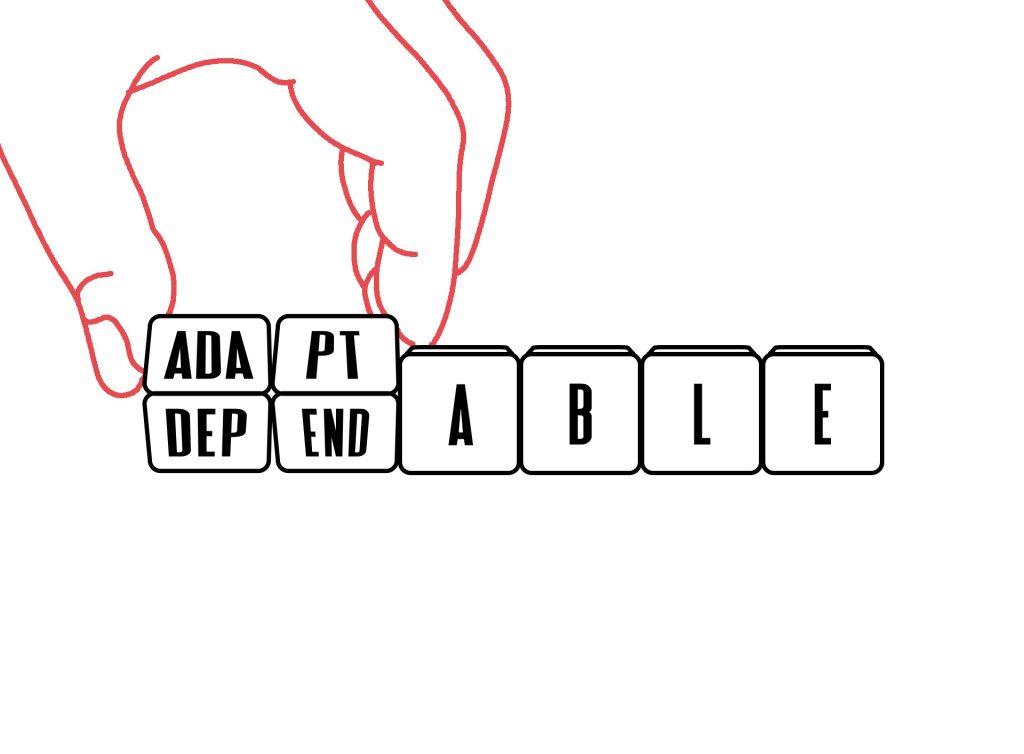
This is the best of both worlds for men’s league hockey players because it allows you to look at your upcoming schedule, then look at the workouts, and simply plug them into your schedule when it’s going to work best for you.
Within our Men’s League Domination ’22 member’s area, we have a video showing you exactly how to schedule your training sessions based on your weekly schedule. This gives our hockey players the best results possible each and every week because when you’re at the driver’s wheel for schedule design, nothing can stop you.
SmartPower™ Conditioning Integration
There are three energy systems the body utilizes to create energy for hockey:
- Aerobic system
- Lactic system
- Alactic system
Although energy production sounds pretty straightforward when you just look at it like aerobic/lactic/alactic, many hockey players miss some very important details along the way when designing programs to enhance on-ice conditioning levels.
The reality is that the specific conditioning of these energy systems provides the specific fuel you need in order to get your muscles to do the job you want them to do.
Explosive speed during a breakaway? You’ll need excellent alactic power and capacity.
Is your team often short of players so you get way more ice time and longer shifts? Or, do you simply need to get leaner? Emphasizing lactic energy system development will help you most here.
Find yourself losing gas by the third period? Or seem to never catch your breath in between shifts? Incorporating aerobic conditioning methodologies will go a long way here.
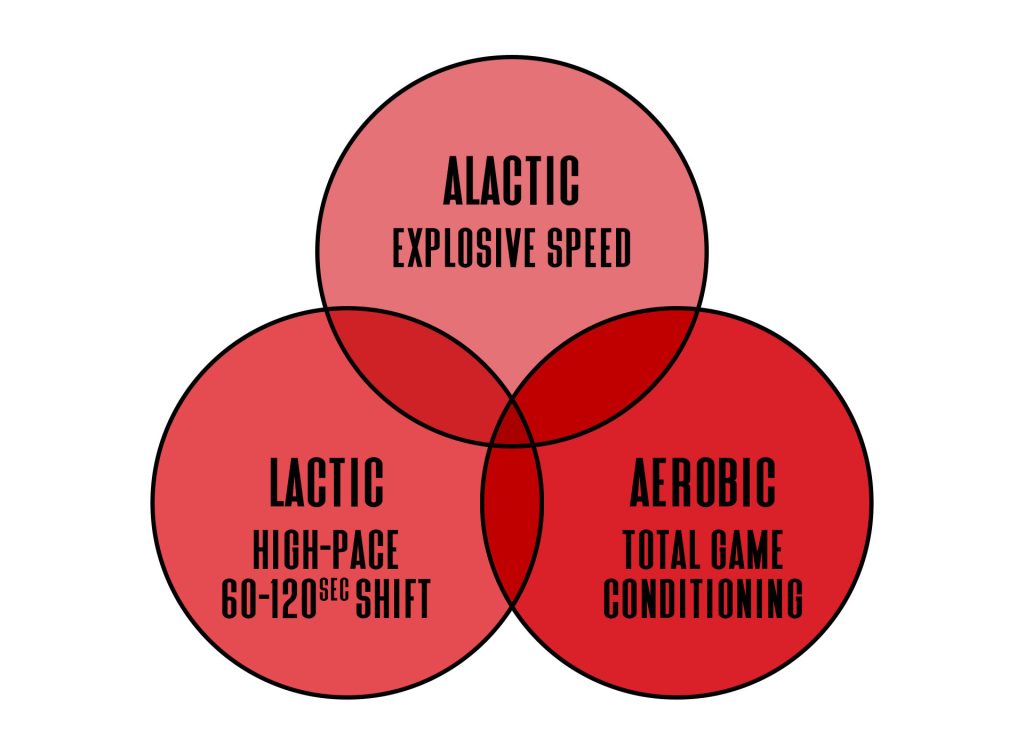
If you’re paying close attention, you’ll want to check all of the above boxes as a men’s league hockey player and become well-versed in aerobic, lactic, and alactic development.
Your muscle cells are living cells, just like all the other cells in your body. They require energy at a constant rate to do their job of contracting and relaxing your muscles in a coordinated manner to move you around.
Your cardiac muscles require energy to pump blood throughout your body and eventually recycle it back, so the more active you are, the more active your heart has to be as well.
Lastly, your smooth muscle tissue, such as the muscle tissue that makes up your small intestines, is constantly working to process/digest/eliminate food—and requires energy every step of the way.
One of the biggest reasons I stress creating a meal plan for optimal performance and recovery is largely to provide the exact biological energy your muscles need in order to perform the activities that the predominant energy system is going to need fuel for (i.e. creatine for alactic, carbohydrates for lactic, and fat for aerobic).
Breaking down energy production further, we are primarily looking at three different components of physical preparedness to know if you are at optimal conditioning levels and are ready to dominate on the ice:
- Rate of energy production
- Duration of energy production
- Efficiency of energy expenditure
Additionally, we can use these as markers to see if our programming needs any tweaking to get a more customized result for a hockey player who may have a unique weak link in the chain.
1. Rate of energy production:
The rate of energy production comes down to hockey-specific power development.
For those of you unfamiliar, power is very different from strength. Power represents your rate of force development, whereas strength would represent your absolute strength. For example, if you take two athletes who can both deadlift 500lbs, but one athlete can deadlift the 500lbs faster than the other athlete—their strength is the same, but the one who did it faster is more powerful.
Why? Because he was able to generate the amount of force required to deadlift the 500lbs faster than the other athlete, thus making him more powerful.
Physics would define power as “the rate of work being performed,” but in real life, it’s much more easily understood in the form of a deadlift—or, your ability to take a full slapshot faster than your opponent.
In order to generate a high power output, your muscles need to be able to contract and relax with lightning speed.
For example, if you’re a fan of combat sports, sometimes there is a fight-ending punch that you barely even see. It happens so fast, and neither the opponent nor the audience can see it coming. The “oh!” sound from the audience almost comes at a delay because it takes the brain a moment to process before it can react (and perhaps only fully understand what happened after seeing a slow-motion replay).
This is important to point out because the faster your alactic system can generate this energy, the more power you will be able to generate.
In hockey, you’re working with athletes in a sport that demands consistent and repeated high-power output efforts (shooting, skating, hitting, fighting, fast puck handling, saving, etc.). So if you want to properly train for hockey, you’re going to want to include some high-power alactic training a minimum of once per week throughout your periodization strategy.
2. Duration of energy production:
The duration of your energy production is what I mean when I refer to “capacity” when talking about energy systems.
Power is your force generation, and capacity is how long you can maintain that force output.
Alactic capacity = the amount of time you can maintain an extremely high intensity of physical output, such as all-out skating or a sprint—typically quantified in the research at 5–15 seconds of total all-out effort.
Lactic capacity = the amount of time you can maintain a very high intensity, but not necessarily an all-out intensity. This represents your typical hockey shift, and physiological research points this to being the energy system you will tap into during 60–120 seconds of non-stop high-intensity work.
Aerobic capacity = the amount of time you can maintain aerobic-level conditioning at a respectable intensity for a long period of time. In the research, this is typically quantified as any activity that exceeds 20 minutes in duration. So for you, this means a game, practice, or workout.
The duration of energy production is fundamentally important to someone who is interested in improving their hockey performance. This duration refers to and sheds important insight on both your current capability and how much you can improve.
I want you to think about capacity through the lens of the duration of the activity you’re measuring. In other words, make sure you’re understanding which energy system is activated when you’re determining the capacity of your ability.
There are some major things you need to understand when it comes to the capacity of hockey-specific energy production:
- How fast do you burn through your fuel?
- How big is your fuel tank?
- How long will your fuel last?
- How prepared is your supply and demand chain?
- How fast does your physiology recover after an intense shift?
In other words, if you increase the amount of horsepower you can produce, you’re going to run out of gas sooner (alactic-power dominant athlete). Unless, of course, you find a way to increase how much gas your tank holds and how prepared you are when it’s time to rock (well-rounded, alactic-lactic-aerobic hockey player).
When you’re capable of understanding and adapting to these various mechanisms of energy duration capacity, you will be able to play harder and longer. Plain and simple.
3. Efficiency of energy expenditure:
Because my specialty is strength and conditioning, I’m not going to be teaching you technical movement skills and how to perform exact skills during a hockey game. But for the sake of completeness, I need to acknowledge that skill and technique play an immeasurable role in energy economy.
When you improve your technique and you’re able to better relax during competition due to confidence in skill execution, you will massively improve your energy economy.
Your body works very hard to generate energy when you need it, but how effectively and economically it can create and utilize this energy depends largely on your hockey technique.
For example, if you’re flailing your arms and legs around like a maniac while skating, you’re burning way more calories than you need to, resulting in poor energy economy and running out of gas sooner than you otherwise would have if you had excellent and efficient movement mechanics.
Part of improving your hockey conditioning comes exclusively down to technical ability. Hockey players need to learn how to use the energy they produce as efficiently as possible through proper techniques.
My program can work wonders for you, but if you have technical inefficiencies, you won’t be able to use the physiological tools I’m giving you to their maximum potential.
In other words, all of the power and capacity training methods in the world aren’t going to help you if your movement mechanics are very poor. But as you enhance your technique in both hockey and your workouts (don’t forget that all your gym workouts have energy economy due to technique as well), you will gradually become much better at becoming efficient with your energy expenditure.
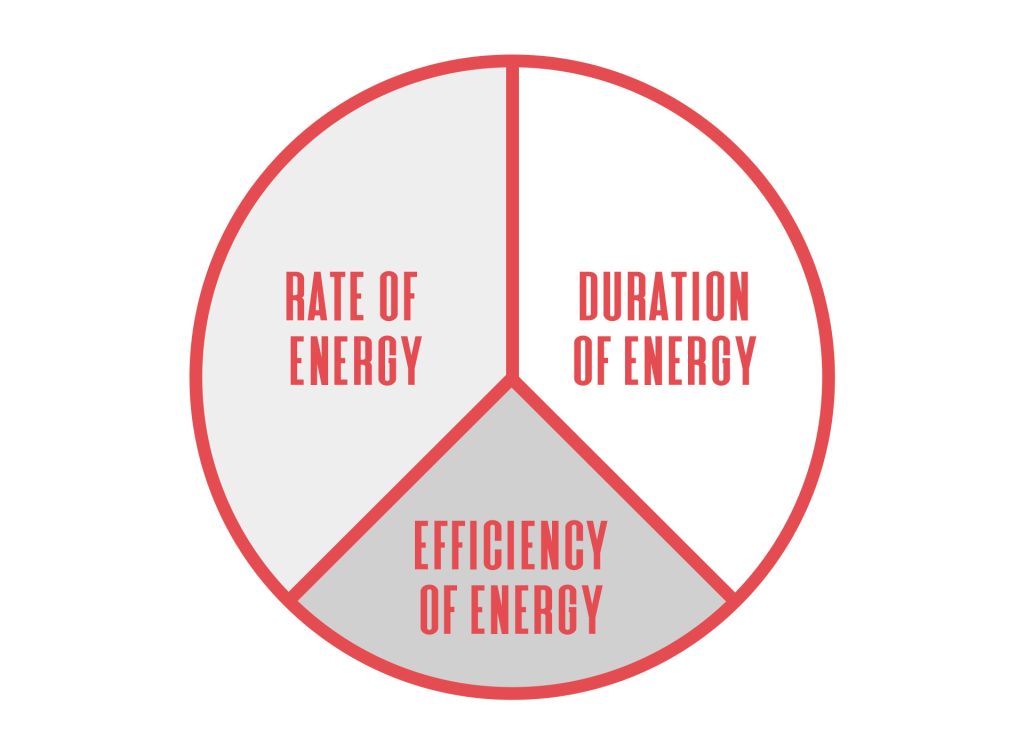
At this point you might be thinking, what does all this have to do with the SmartPower™ Matrix? Well, it has everything to do with the SmartPower™ Matrix because your three mandatory weekly workouts break down like this:
Workout 1 – Functional Resistance Training A + Aerobic Training
Workout 2 – Functional Resistance Training B + Lactic Training
Workout 3 – Functional Resistance Training C + Alactic Training
Furthermore, each energy system training methodology utilizes the methodologies that are easiest on the joints so you can become the most well-rounded athlete from both a power and capacity perspective without ever beating up your body.
Beyond this, the warm-ups and cool-downs have built-in hockey-specific mobility drills so you can enhance your technical ability and thus improve your energy efficiency.
Within a three-day training week, you can accomplish more than 99% of hockey players in the men’s league in half the time it takes them to do it with their old outdated training methods.
Hockey Muscle Builder
Just because you’re training, doesn’t mean you’re training for hockey.
Too many men’s league hockey players run generalized exercise programs such as bodybuilding routines, powerlifting routines, or CrossFit—or worst of all, sometimes men’s league hockey players just sort of make things up as they go along and hope that it happens to improve their performance in the end.
This isn’t how sports science works—and it’s definitely not how program design works. If it were that easy, then there would be no NHL trainers because everyone would be doing the same things.
Creating a workout and full program design for hockey performance takes extreme attention to detail surrounding the principles of training and what types of methods are best suited to create a transfer-effect of what you’re doing in the gym and how that represents itself as an improvement on the ice.
Put another way: just because you’re building muscle doesn’t mean that muscle will improve functional outputs in a game setting.
There is a principle in training known as the “principle of specificity,” which I outline quite thoroughly in my Hockey Training Specialist certification course. It represents the idea that what you are doing in the gym must in some way be specific to the outcome you want in the end.
Low specificity exercises for hockey could be BOSU ball squats, DB concentration curls, and cable crossovers because they will play almost no role in the outcome of your performance come game day. Whereas high specificity exercises are the ones that hockey athletes should generally have in their program design in some form or another year-round, as they create the largest degree of strength transfer to an on-ice, game-pace setting.
This is exactly what the Hockey Muscle Builder workout is all about.
It plays its role within the SmartPower™ Matrix as an optional add-on workout that men’s league players can perform if they have extra time available to them and are interested in packing on more functional strength/size to improve their speed, agility, shot power, and ability to stay strong on the puck.
Hybrid Speed Session
The Hybrid Speed Sessions are designed to keep your hockey performance at an all-time high by simultaneously maximizing your speed, agility, and conditioning all at once.
I have integrated what’s known as the Cardio Acceleration Method into every session; this particular type of training methodology is what allows us to simultaneously work on several physical fitness qualities at once.
Additionally, you will be performing eight movements in each Hybrid Speed Session that break down the anatomy of hockey performance in order to make you a dominant skater:
- Two exercises for starting speed
- Two exercises for top speed
- Two exercises for stride power
- And two exercises for core stability
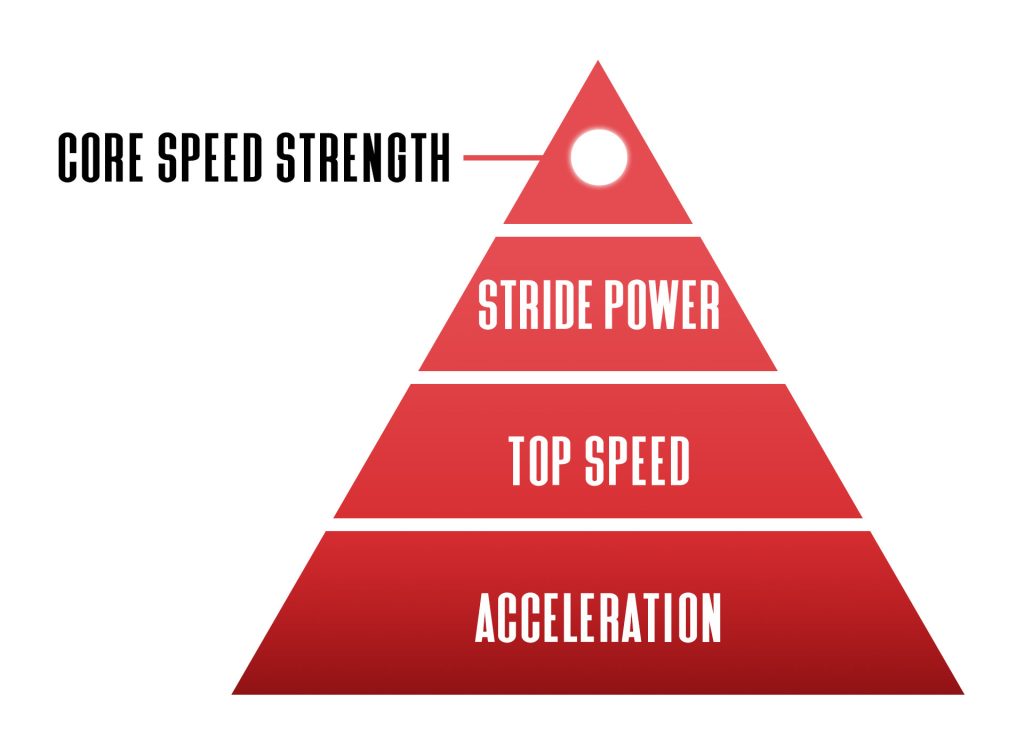
Merging hockey-specific movements with the Cardio Acceleration Method allows you to effectively train nearly every single elite hockey skating quality all in the same session.
Stability, speed, agility, stride length, stride frequency, and conditioning are all tackled in this high-output session so that you’re always one step ahead of your opponent.
This workout is tough and is reserved only for the motivated men’s league hockey player who has a burning desire to be the best in the league. If you can walk through this fire, you’ll come out the other side a much better hockey player.
Similar to the Hockey Muscle Builder, this routine is an optional add-on if your goal is to really improve your speed/agility/conditioning and you have extra time in your schedule to get the job done.
Your Solution: Men’s League Domination ’22 Featuring SmartPower™
Currently, how I structure the above SmartPower™ Workouts is one of my best-kept coaching “secrets”—and now, the secret is all yours with the brand new Men’s League Domination ’22 system.
If you’re serious about becoming a better hockey player this year and you want to take your abilities to the next level, then pay very close attention, because starting today, you can be one step closer to becoming a star player.
You don’t have to be a “natural talent” to instantly up your game and have the best season of your life this year—because you can get instant access to the exact program you need to maximize your potential.
Look, I know playing in the men’s leagues is all about having fun, but it’s a lot easier to have fun when you’re dominating on the ice and reaching every goal you set for yourself.
Sure, you could go through all the research studies I have read and slowly piece it all together with everything I laid out above and you’d probably do just fine, but if you want to take all the guesswork out of it and get access to a completely “done for you” high-level program to get the best possible results, then check out the brand new Men’s League Domination ’22 system and let’s get started today.
Lean on my experience of working with thousands of hockey players (including NHL players) and discover what you need to do in order to be your absolute best on the ice.
The Men’s League Domination ’22 system includes a full gym version, a home gym version, and a bodyweight-only version, so no matter what life throws at you, you will always have a go-to performance booster to keep your progression rates linear.
Not to mention, the program can be successfully run for one full year of programming, so you can expect insane results using these methods.
Unstoppable speed, edge work, conditioning, and agility can all be a reality for you this year; join the team here, and let’s crush this thing.
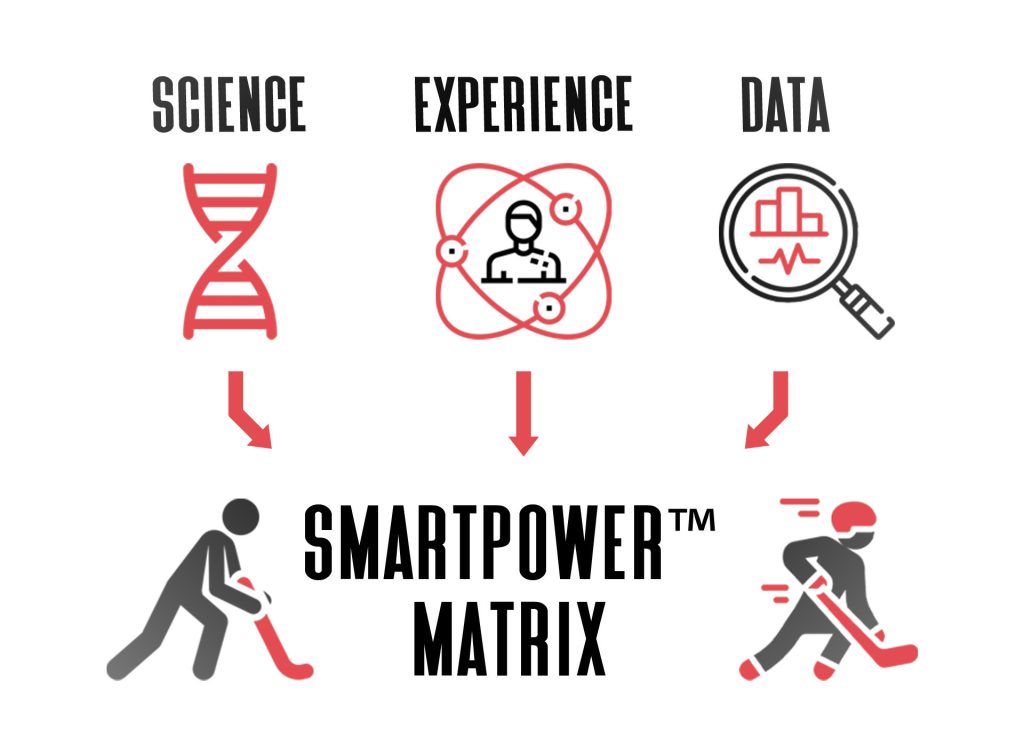
Final Thoughts
The SmartPower™ System is something that can help men’s league hockey players all over the world fall in love with hockey again because they will perform better than they ever have before.
This type of programming has taken many years for me to master. With that said, I truly believe the SmartPower™ System is a masterpiece when it comes to designing programs specific to everything the men’s league player needs to dominate. It is THAT powerful.
Use the strategies above, or take the guesswork out and join the team here.
Keep me posted on how well you do this year! 🔥




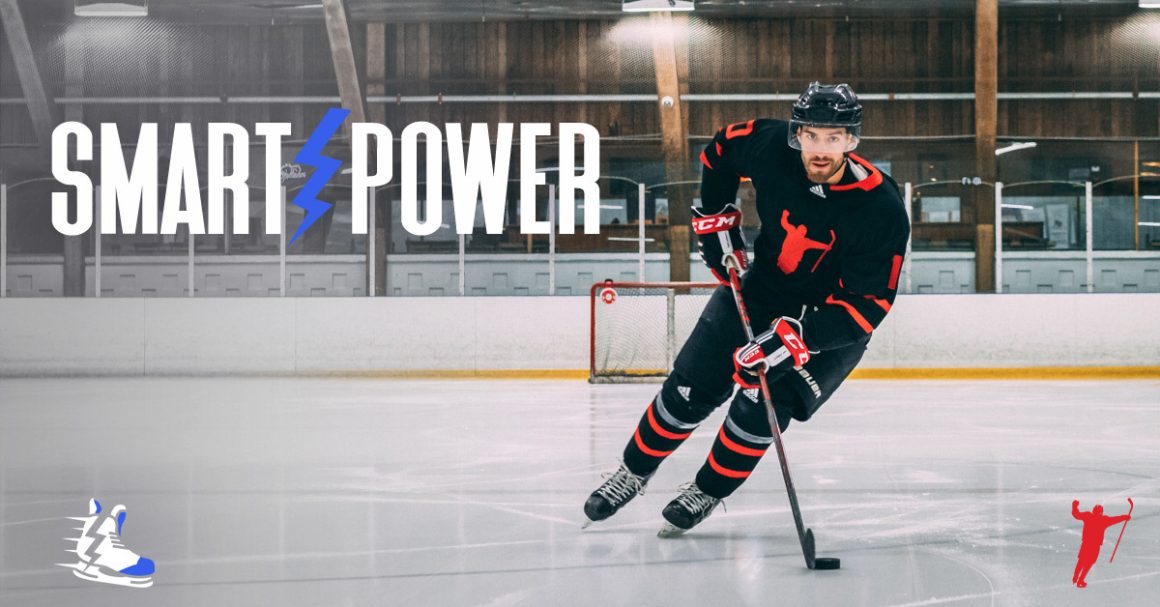
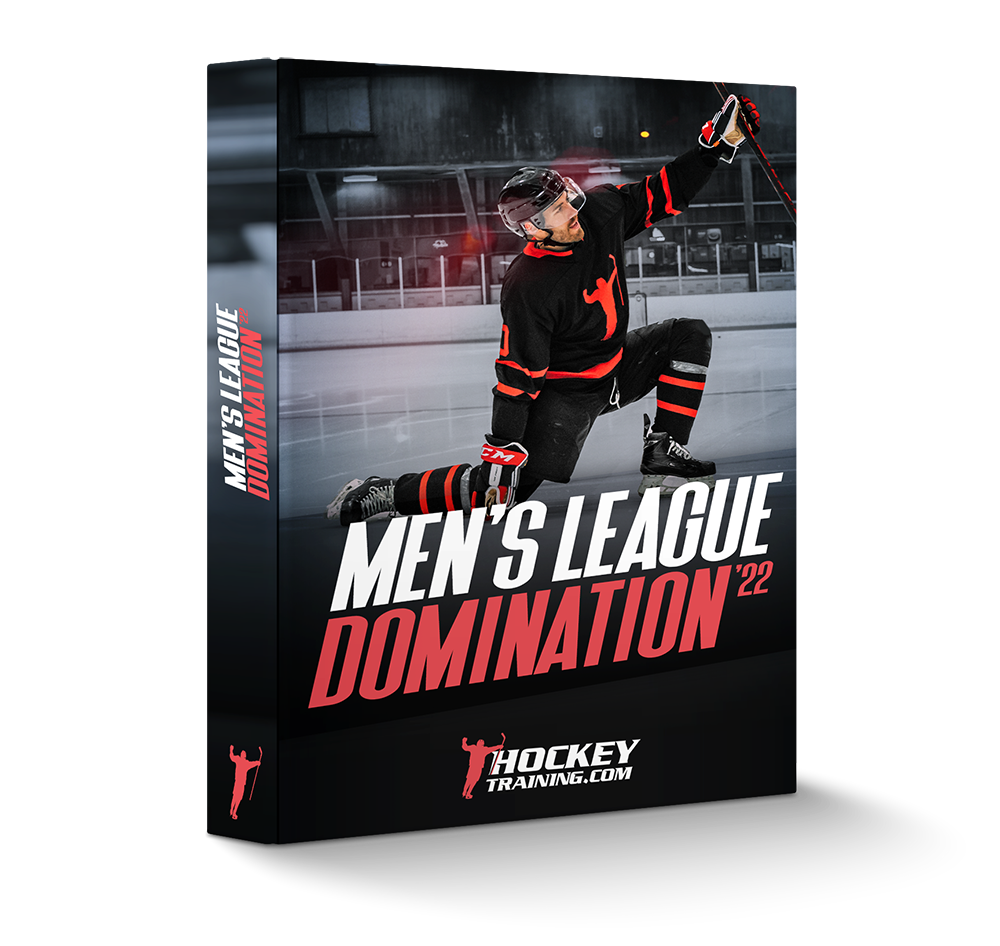
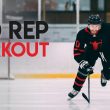
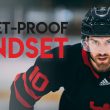



Thanks Again Dan for All You do for The Game ! Sounds like another One of Your Fantastic Programs !